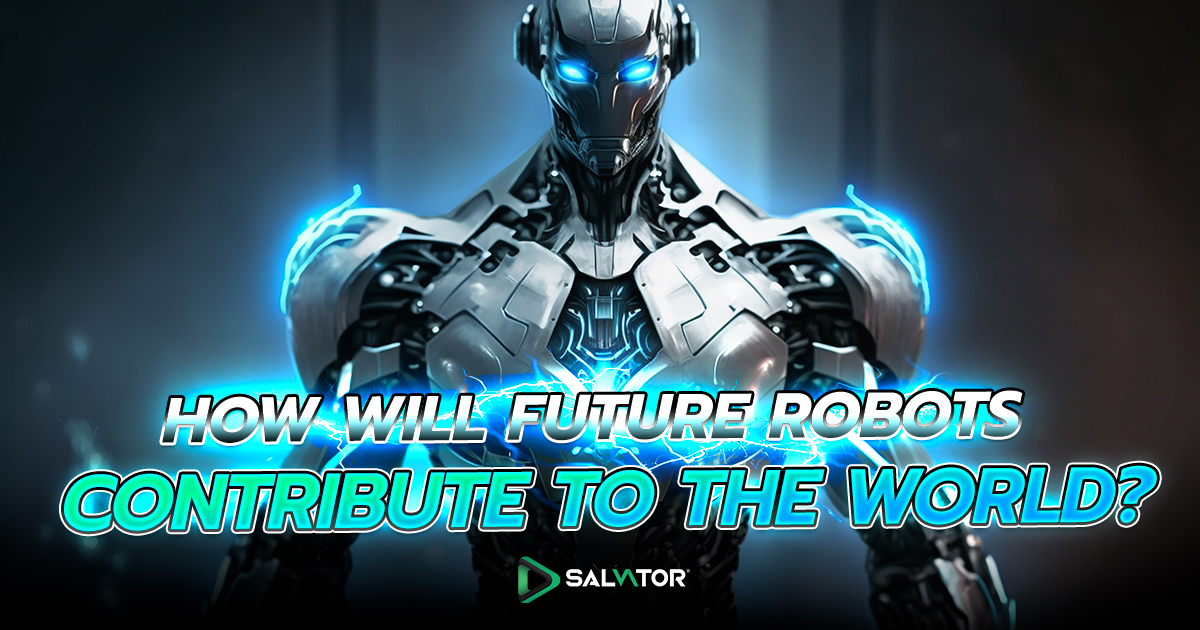
temi, The Service Robot
How do robots in the Future contribute to the world?
 1 views
1 views
Rapid technological breakthroughs are building a future in which robots will play a vital part in all facets of human lives. From complex industrial applications to individualized household assistants, the evolution of robots holds enormous promise. In this inquiry, we look at the possibilities of robots in the future, evaluating their impact on society, the economy, and our daily lives.
1. The Current State of Robotics
To comprehend the future, we must first analyze the condition of robots today. Robots are currently used mostly in industrial settings to perform activities that humans perceive as excessively risky or repetitious. These machines, which are frequently equipped with artificial intelligence (AI) and machine learning capabilities have transformed manufacturing processes, increasing efficiency and precision.
Collaborative robots, often known as cobots, are gaining popularity. These robots operate alongside humans to improve productivity and safety in a variety of industries. Furthermore, robots are being used in healthcare, agriculture, and even customer service, expanding the field of robotics beyond manufacturing.
2. The Integration of Artificial Intelligence
Robotics' future is inextricably related to the growth of artificial intelligence. Robots are projected to have increased cognitive capacities as AI gets more complex, allowing them to adapt to dynamic settings and make decisions autonomously. Machine learning algorithms will enable robots to learn from experience and continuously improve their performance.
Incorporating AI into robots presents ethical concerns, such as questions about accountability and the potential influence on employment. Finding the correct balance between automation and human interaction will ensure a healthy coexistence of people and robots.
3. Robots in the Service Industry
The rising presence of robots in the service sector will be one of the most visible future shifts. Robots are anticipated to take on tasks such as waitstaff, concierge, and perhaps chefs in restaurants and hotels. This move has the potential to improve consumer experiences, streamline operations, and lower corporate labor costs.
Personal service robots with natural language processing (NLP) capabilities will be able to hold meaningful conversations, comprehend user preferences, and make personalized recommendations. This not only improves productivity but also gives a personal touch to the service business.
4. Healthcare Revolution with Robotic Assistance
Robotic technology has the potential to greatly improve the healthcare sector. Autonomous robot technology could aid with regular medical tasks. This allows medical staff to focus on more complex concerns, such as the employment of robots in hospitals. To become a delivery robot Used to send medical shipments or patient paperwork within the hospital, giving medical workers more time to care for patients. Examples of robots include temiGo and YBot.
Telepresence robots with cameras and sensors can conduct remote medical consultations. TemiV3 facilitates communication between patients and healthcare practitioners.
5. Robots and Education
The incorporation of robots into education has the potential to transform how students learn. NLP-enabled educational robots can enhance interactive and adaptable learning experiences. These robots might serve as tutors, offering pupils individualized assistance based on their unique requirements and learning styles.
Furthermore, robots could function as educational partners, encouraging children's creativity and critical thinking skills. These robots' interactive nature may make learning more engaging and fun, altering established educational paradigms.
6. Ethical Considerations and Societal Impact
While the possibility of a robotic future is thrilling, it is critical to consider the ethical issues and potential societal consequences. Privacy, security, and the ethical usage of AI in robots are all issues that must be carefully considered. Striking a balance between innovation and regulation is critical to ensuring that robots are created and deployed responsibly.
The societal consequence of widespread automation raises concerns about job loss. As robots take over mundane and physical activities, nations must engage in reskilling and upskilling projects to educate the workforce for roles that demand uniquely human qualities such as creativity, empathy, and complex problem-solving.
Conclusion
To summarize, the future with robots has enormous potential for positive change, but it necessitates a delicate balance of innovation and accountability. As we move forward, it is critical to emphasize ethical concerns, address societal concerns, and guarantee that the benefits of robotics are distributed equally.
We can direct the course of robotics toward a future in which these machines enhance human capacities, improve quality of life, and contribute to the benefit of society as a whole by encouraging collaboration between governments, industry, and the broader population. Accepting the robotic future is more than just a technological advancement; it is a societal revolution that demands caution.
We can direct the course of robotics toward a future in which these machines enhance human capacities, improve quality of life, and contribute to the benefit of society as a whole by encouraging collaboration between governments, industry, and the broader population. Accepting the robotic future is more than just a technological advancement; it is a societal revolution that demands caution.
ติดต่อหาเราได้ที่ Salvator Tech
ติดต่อสอบถามข้อมูลเพิ่มเติม
หรือ แอดไลน์เพื่อแชทกับเจ้าหน้าที่

@salvatortech
ดูบทความอื่นๆ ที่น่าสนใจ






